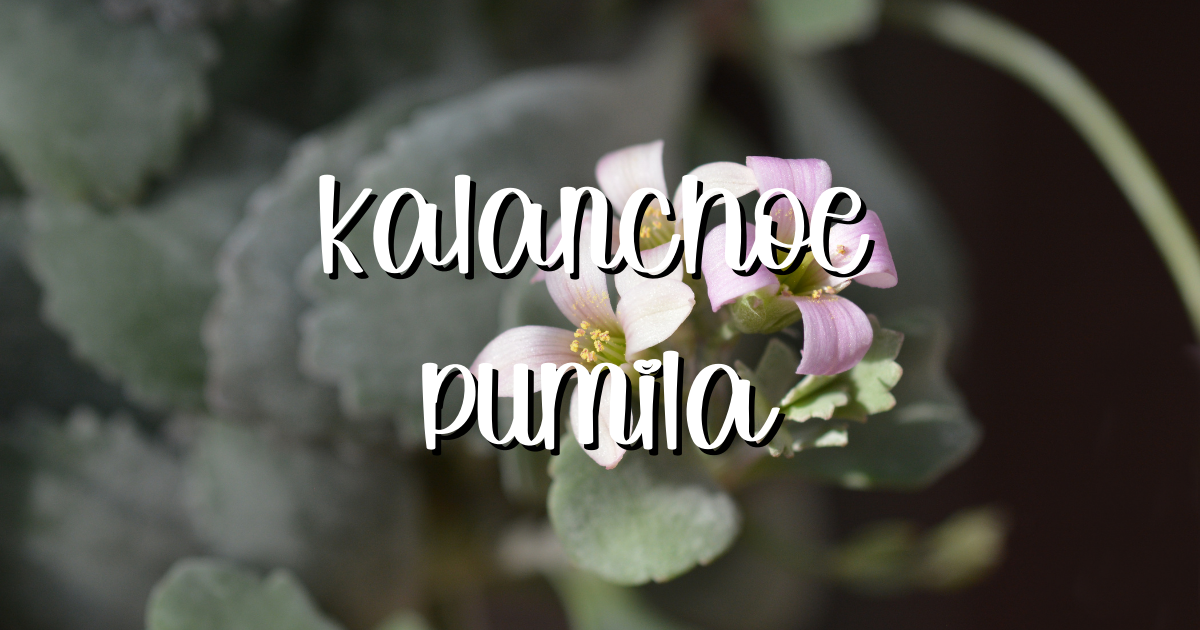Have you ever come across a plant that looks like it’s been dusted with silver? You might have just discovered the beautiful Kalanchoe pumila, also known as the ‘Silver Flower Dust Plant’. This unique and low-maintenance succulent is prized for its shimmering foliage and vibrant flowers. In this comprehensive guide, we’ll explore everything you need to know about this intriguing plant, from its origin and appearance to growth and care tips.
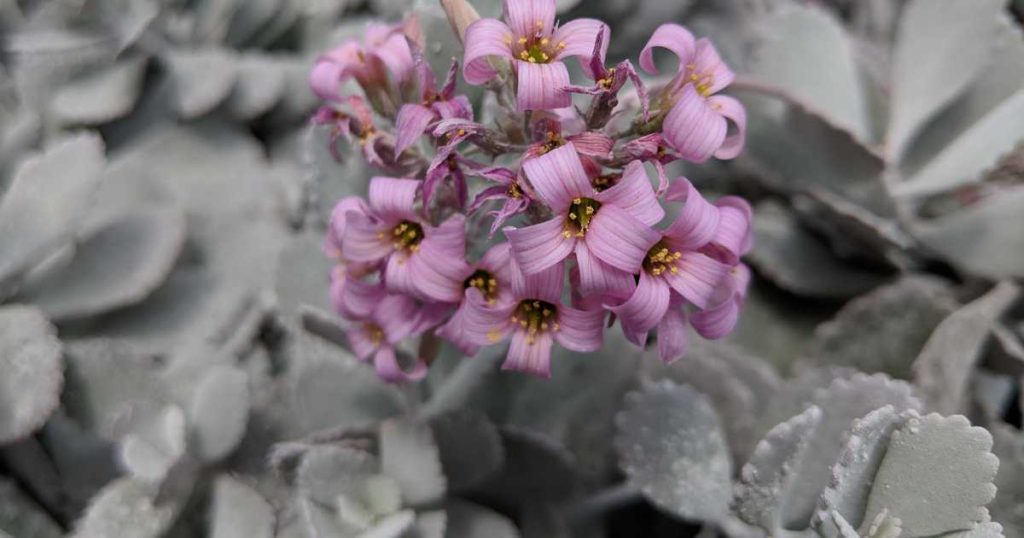
Origin and Classification
Kalanchoe pumila ‘Silver Flower Dust Plant’ is a member of the Crassulaceae family, which also includes popular succulents like jade plants and echeverias. Native to Madagascar, this resilient plant has adapted to thrive in arid environments. As a result, it’s an excellent choice for gardeners seeking a drought-tolerant and easy-to-care-for plant.
Appearance
Kalanchoe pumila ‘Silver Flower Dust Plant’ is a low-growing, spreading succulent that typically reaches a height of 6-12 inches (15-30 cm). Its unique appearance makes it a standout addition to any garden or container.
Leaves
The leaves of Kalanchoe pumila ‘Silver Flower Dust Plant’ are its most distinctive feature. They are small, fleshy, and oval-shaped, with a silvery-gray color and a powdery texture. The edges of the leaves are often tinged with a purple hue, adding to the plant’s overall visual appeal.
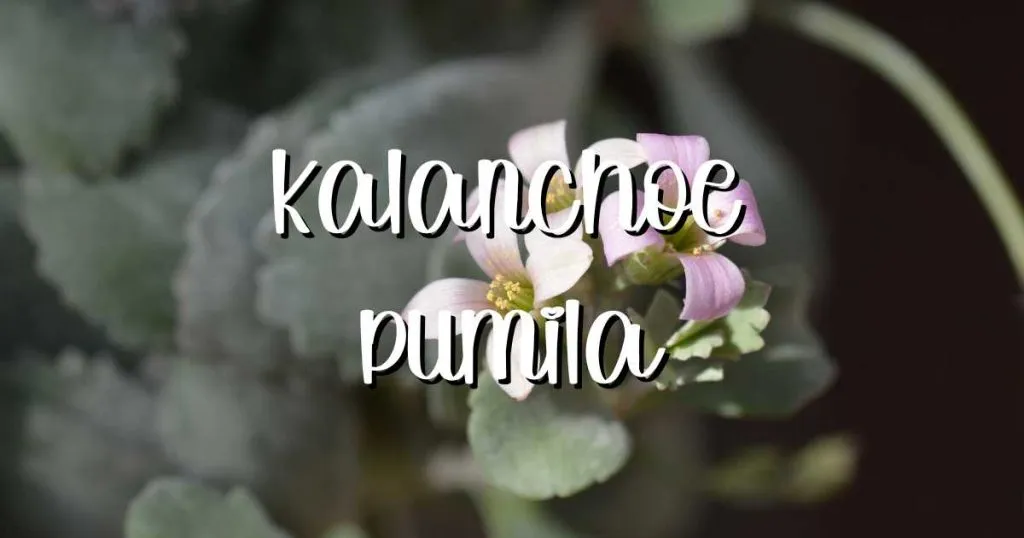
Flowers
Aside from its stunning foliage, Kalanchoe pumila ‘Silver Flower Dust Plant’ also produces vibrant, bell-shaped flowers. These blossoms typically appear in late winter or early spring and come in various shades of pink or lavender. The small flowers are held on delicate stems above the foliage, creating a striking contrast.
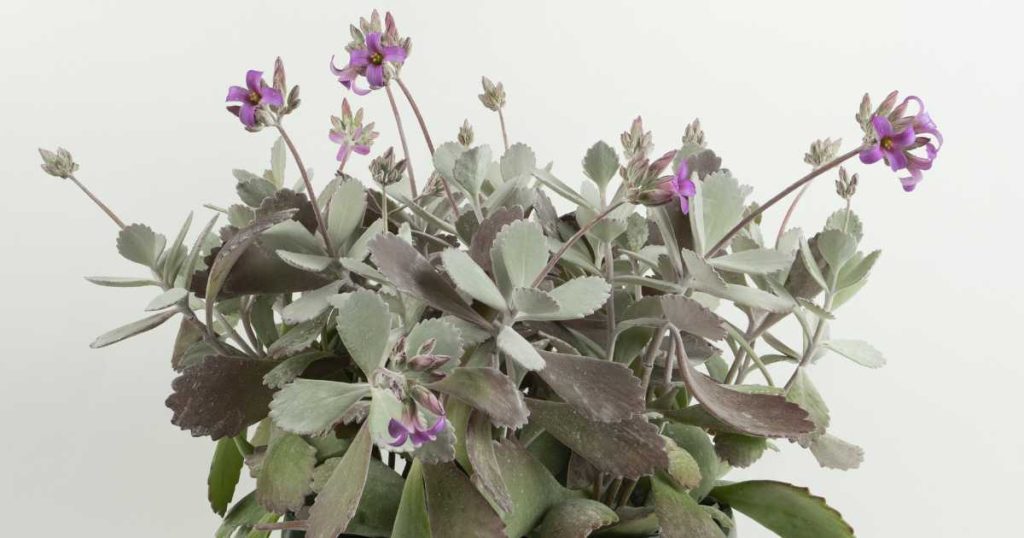
Growth and Care
Kalanchoe pumila ‘Silver Flower Dust Plant’ is a low-maintenance plant that can flourish with minimal attention. Here are some essential care tips to help your ‘Silver Flower Dust Plant’ thrive:
Light Requirements
Kalanchoe pumila ‘Silver Flower Dust Plant’ loves bright light and can even tolerate full sunlight. However, it’s essential to acclimate the plant gradually to direct sun to avoid scorching its leaves. Indoors, place your Kalanchoe pumila near a sunny window where it can receive at least 4-6 hours of sunlight each day.
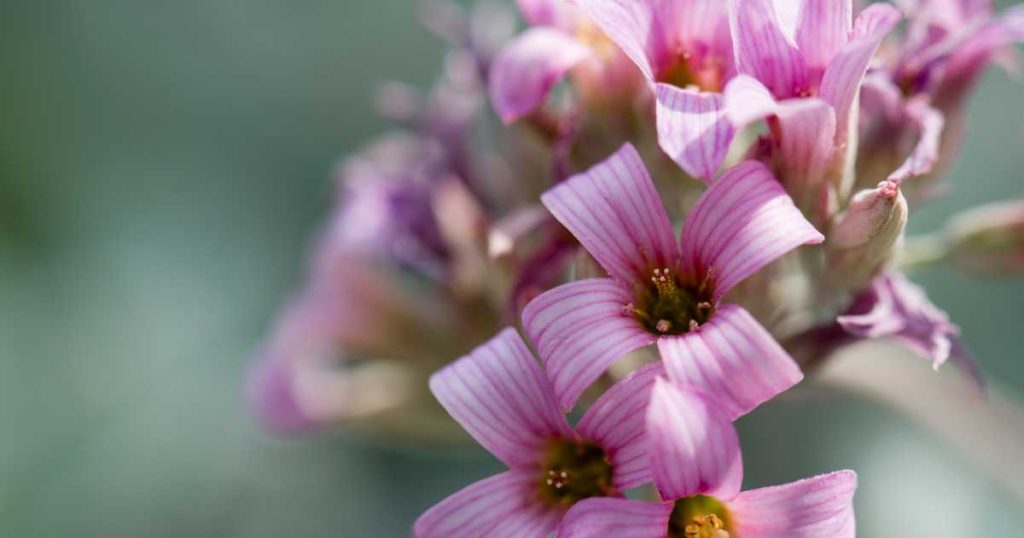
Watering
As a drought-tolerant plant, the Kalanchoe pumila ‘Silver Flower Dust Plant’ requires minimal watering. Allow the soil to dry out completely between waterings, then water thoroughly until the excess drains from the bottom of the pot. Overwatering can lead to root rot, so it’s better to err on the side of caution.
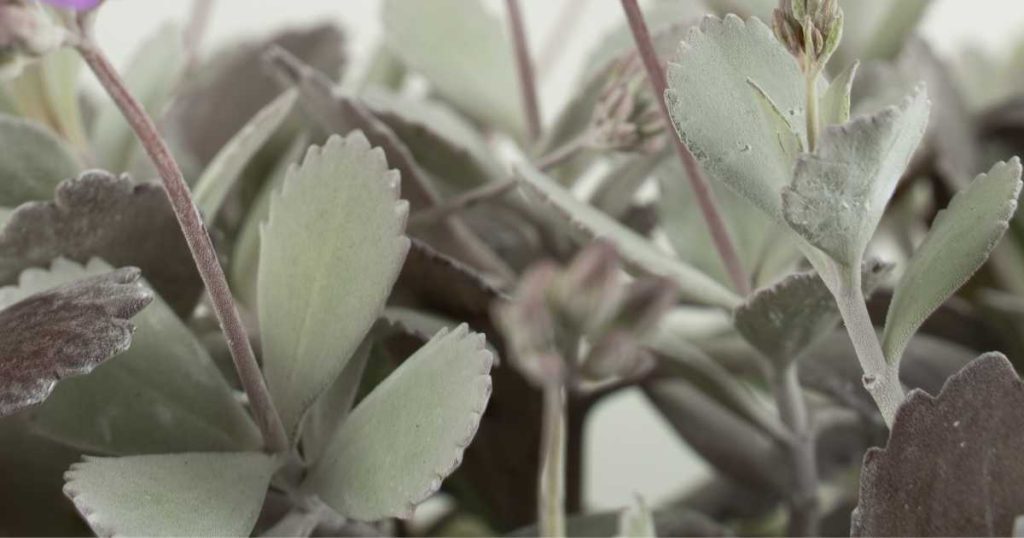
Soil and Potting
Kalanchoe pumila ‘Silver Flower Dust Plant’ thrives in well-draining soil, such as a succulent or cactus mix. To promote drainage, you can also add perlite or coarse sand to a regular potting mix. When choosing a pot, opt for one with drainage holes to prevent water from pooling at the bottom.
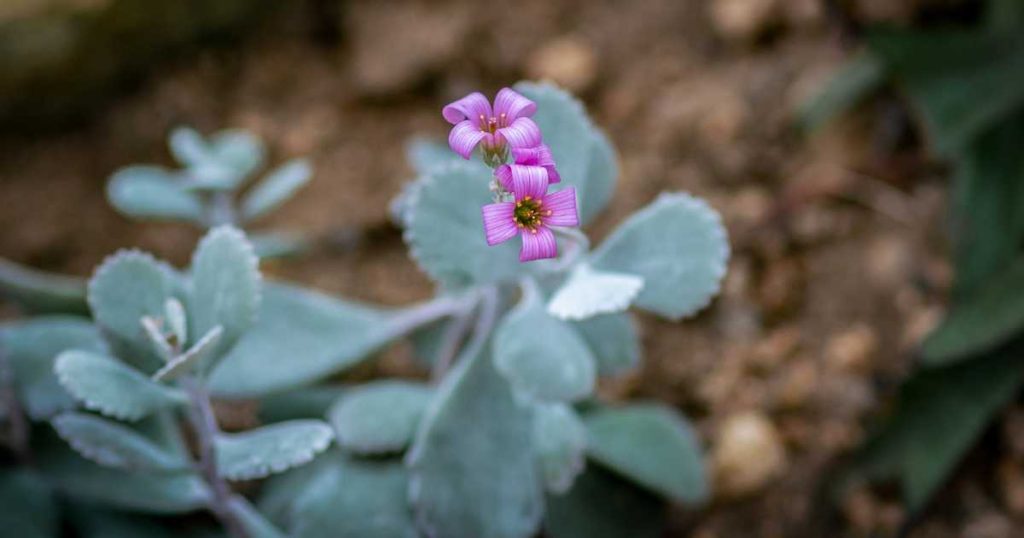
Temperature and Humidity
Kalanchoe pumila ‘Silver Flower Dust Plant’ adapts well to typical indoor temperatures, ranging from 60-75°F (16-24°C). It’s not frost-tolerant, so be sure to bring your plant indoors if temperatures drop below 50°F (10°C). Kalanchoe pumila ‘Silver Flower Dust Plant’ prefers low to moderate humidity, making it an excellent choice for dry environments.
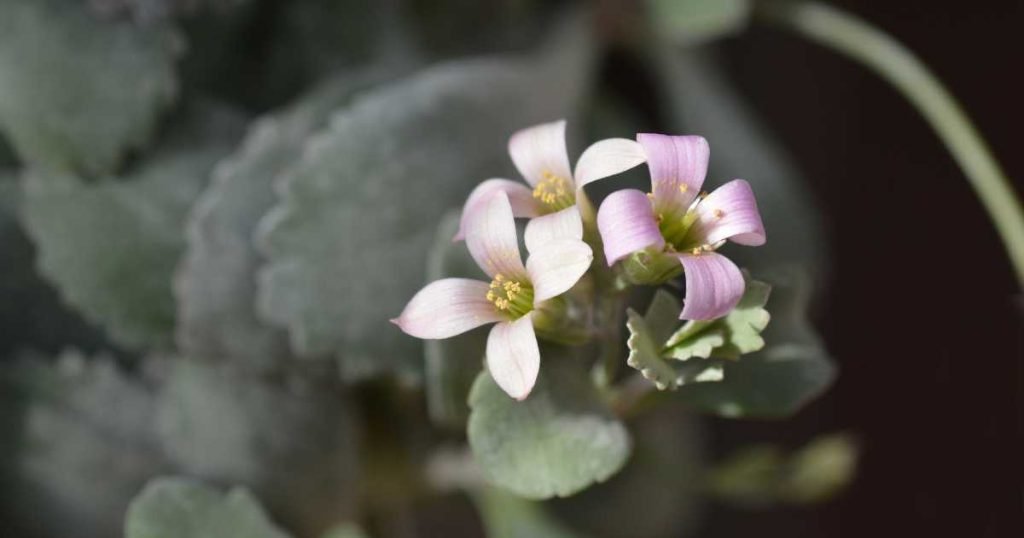
Fertilization
Fertilize your Kalanchoe pumila with a diluted, balanced liquid fertilizer during the growing season (spring and summer). Apply the fertilizer once a month, but be careful not to over-fertilize, as this can lead to leggy growth and reduced flowering.
Pruning and Propagation
To maintain your Kalanchoe pumila ‘Silver Flower Dust Plant’s’ compact growth, prune it lightly after flowering. This will encourage bushier growth and prevent the plant from becoming leggy. You can propagate Kalanchoe pumila through leaf or stem cuttings, allowing the cuttings to callous for a few days before planting them in well-draining soil.
Common Issues
Kalanchoe pumila ‘Silver Flower Dust Plant’ is a relatively problem-free plant, but it can still encounter some common pests and diseases:
Pests
Mealybugs and aphids are the main pests that may affect your Kalanchoe pumila ‘Silver Flower Dust Plant.’ To control these pests, treat the plant with insecticidal soap or neem oil. Regularly inspect your plant for signs of infestation and address any issues promptly.
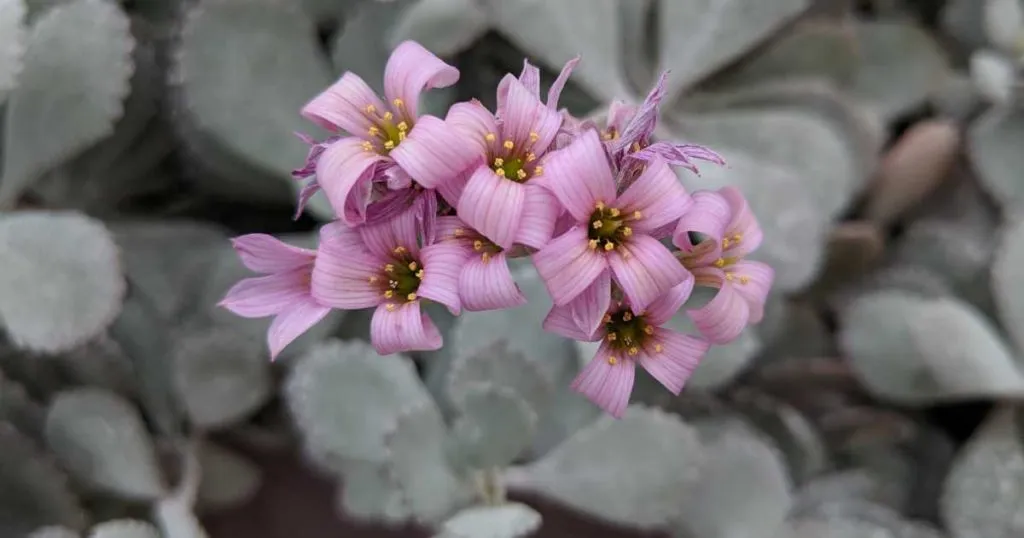
Diseases
Root Rot
Overwatering can lead to root rot, which can be fatal for your Kalanchoe pumila ‘Silver Flower Dust Plant’. To prevent this issue, always allow the soil to dry out between waterings and ensure your pot has proper drainage.
Powdery Mildew
This fungal disease can cause a white, powdery substance to appear on your plant’s leaves. To treat powdery mildew, remove the affected leaves and apply a fungicide to the remaining foliage. Maintaining proper air circulation around your plant can help prevent this issue.
The Kalanchoe pumila ‘Silver Flower Dust Plant’ is a stunning and low-maintenance succulent that can bring a touch of silver to your garden or home. By following the care tips outlined in this comprehensive guide, you can ensure your Silver Flower Dust Plant thrives and continues to captivate onlookers for years to come.
FAQs
1. How often should I water my Kalanchoe pumila?
Water your Silver Flower Dust Plant sparingly, allowing the soil to dry out completely between waterings. Overwatering can lead to root rot, so it’s better to err on the side of caution.
2. Can Kalanchoe pumila grow indoors?
Yes, Kalanchoe pumila ‘Silver Flower Dust Plant’ can thrive indoors as long as it receives at least 4-6 hours of bright light each day. Place it near a sunny window to ensure it gets enough light.
3. Is the Silver Flower Dust Plant toxic to pets?
Kalanchoe pumila is considered non-toxic to pets. However, it’s always a good idea to keep plants out of reach of curious pets, as ingesting large amounts of plant material can still cause digestive issues.
4. How do I propagate my ‘Silver Flower Dust Plant’?
You can propagate your Silver Flower Dust Plant through leaf or stem cuttings. Allow the cuttings to callous for a few days before planting them in well-draining soil.
5. How do I control pests on my Kalanchoe pumila ‘Silver Flower Dust Plant’?
Treat your Silver Flower Dust Plant with insecticide or neem oil to control pests such as mealybugs and aphids. Regularly inspect your plant for signs of infestation and address any issues promptly.

